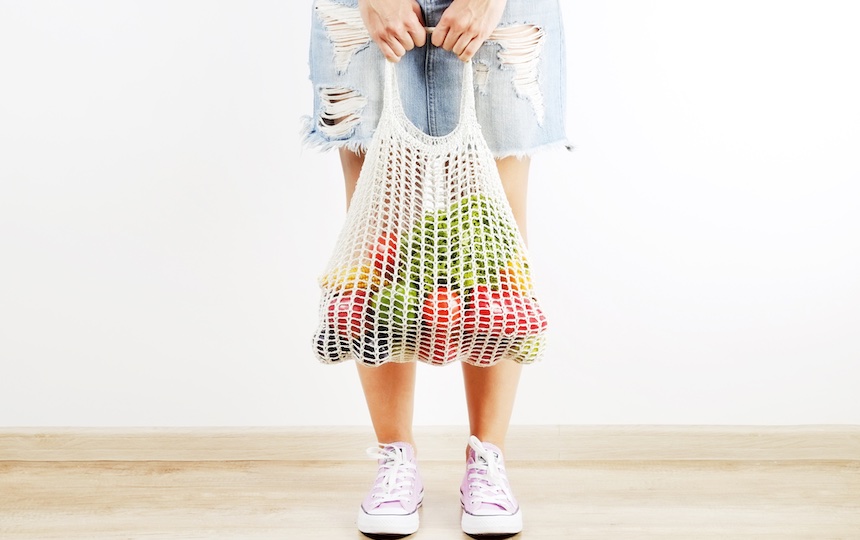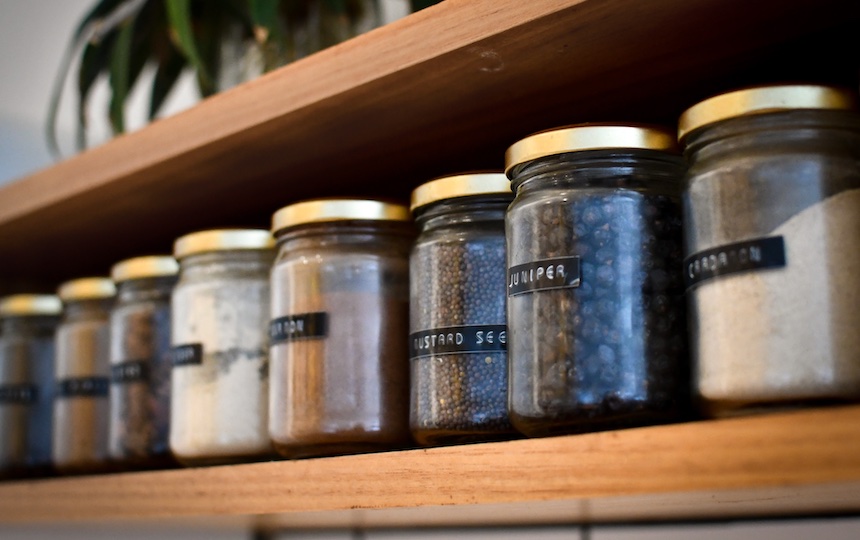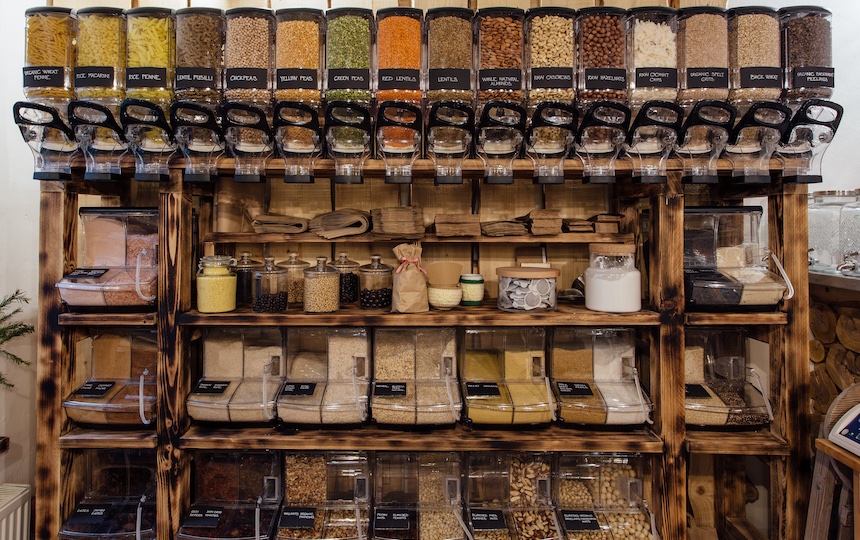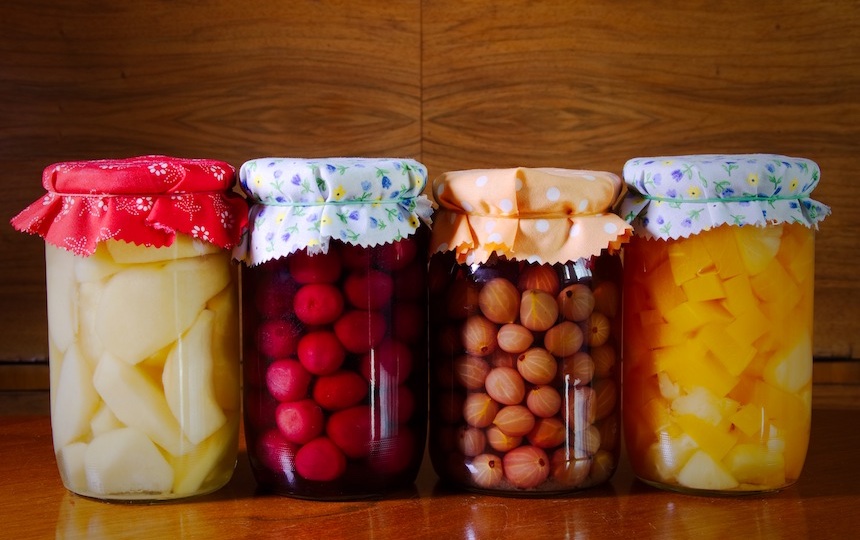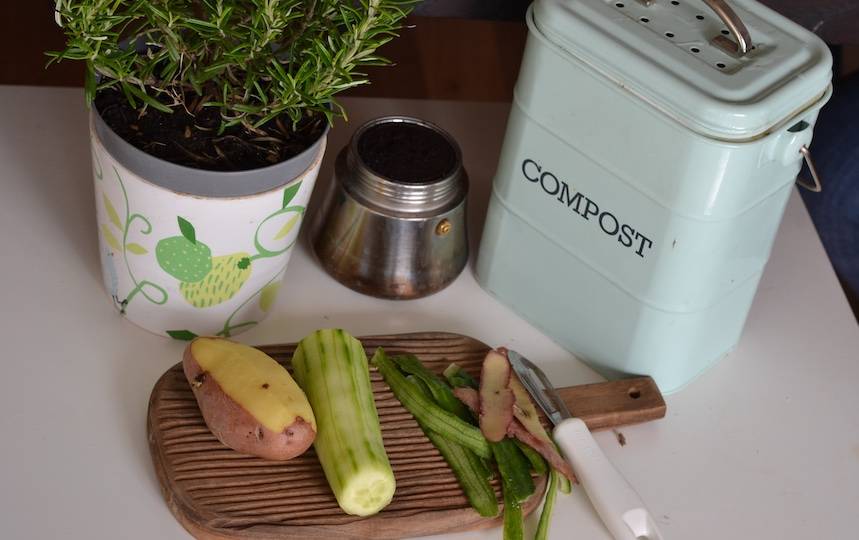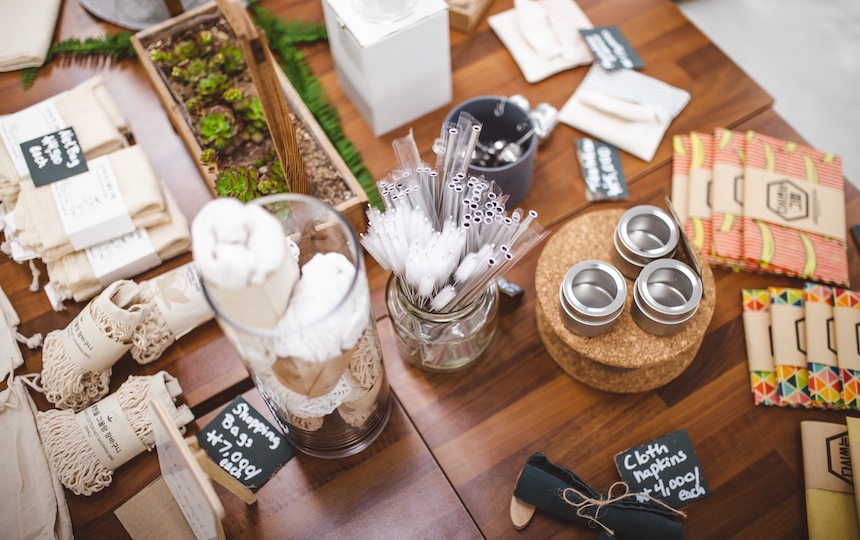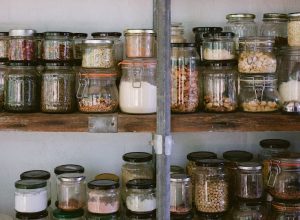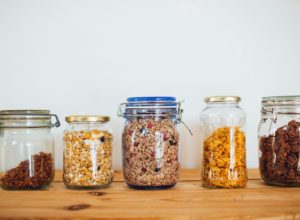New to the zero waste movement? We explain exactly what is zero waste and how living a zero waste lifestyle can help reduce your impact on the planet.
At its most basic level, living a zero waste lifestyle means trying to avoid sending anything to landfill… Whether that’s food scraps, plastic, packaging, paper, clothing… you get the drift.
The way our consumable society is set up initially makes this goal seem insurmountable.
Take a trip down any supermarket aisle and you’ll quickly realise that most of the food people buy is housed in single use packaging. Even the fruit and vegies in commercial supermarkets are now wrapped in plastic.
Whether it’s chip packets, soft drinks or paper towels, items that are destined for landfill after just a single use fill our bags, shopping trollies and cars on a daily basis.
Change is happening though… In early 2019, the European Union voted to ban single-use plastic straws, balloons, cotton buds and cutlery, and Australia has finally caught up, with seven out of eight Australian states and territories now committed to banning single-use plastics.
But while these bans go some way to combating plastic waste, they are only a small part of the overall plastic pollution problem. Therefore, it’s up to individuals, communities and businesses to galvanise further change… until the politicians finally read the room!
If you’re just starting out on your zero waste journey don’t be intimidated by the “zero” part. Getting to 100% zero waste is no small feat and there will always be areas earmarked for improvement, but even small changes make a difference.
You’ll find that committing to a zero(ish) waste lifestyle has a snowball effect. You may start out simply replacing your daily takeaway cup of coffee with a KeepCup and that might be all for now. In time you’ll think about tackling the single use plastics in your bathroom or kitchen, but that’s okay. Even preventing 365 coffee cups per year from going to landfill is a great achievement. It’s all about baby steps. Are you ready to take the first step?
So, what is zero waste exactly?
Zero waste is a philosophy and movement that aims to minimise the amount of waste that is produced – individually and within households – that is traditionally sent to landfill.
Implementing zero waste strategies can not only reduce the environmental impact of waste, but also contribute to tackling climate change.
At the core of a zero waste lifestyle are the five “R’s” – as coined by notable zero waste advocate Bea Johnson (author of ‘Zero Waste Home’ and regarded by some as the founder of the zero waste movement) – Refuse, Reduce, Reuse, Recycle, Rot.
One of the key strategies of the zero waste movement is to reduce the amount of waste that is produced in the first place, by questioning whether an item is really needed (Refuse/Reduce) and through the use of reusable products (Reuse), such as cloth bags instead of plastic bags.
Zero waste living also encourages the use of products that are made from natural, biodegradable materials that can be easily broken down in the environment.
Another important aspect of zero waste is the emphasis on recycling and composting (Recycle/Rot). By diverting organic materials, such as food scraps and yard waste, away from landfills, we can not only reduce the amount of waste we produce, but also create a valuable resource that can be used to improve soil health and grow food.
Along with reducing plastic use, home composting is one of the easiest and most impactful zero waste practices you can adopt. Check out our beginner’s guide to composting food waste here.
Want to know more about what is zero waste?
We’ve got loads of great content about zero waste living.
Issue #14 of Pip Magazine is our dedicated waste free issue, with articles on:
You can access these articles online here as part of our digital subscription offering.
And don’t forget we have loads of zero waste content online, including these articles:
- Zero Waste Living: The First Steps
- Zero Waste Living: The Next Steps
- Zero Waste Living: The Final Steps
- Zero Waste Living: All Your Questions Answered
- 5 Unexpected Benefits of Going Zero Waste
- Zero Waste Pets
- Going Zero Waste With Kids
- 65 Ways to Reduce Plastic Waste at Home

